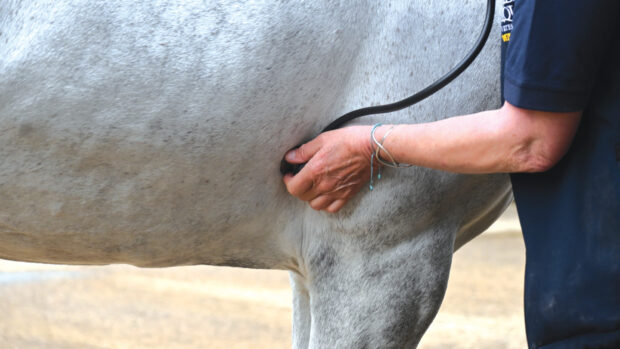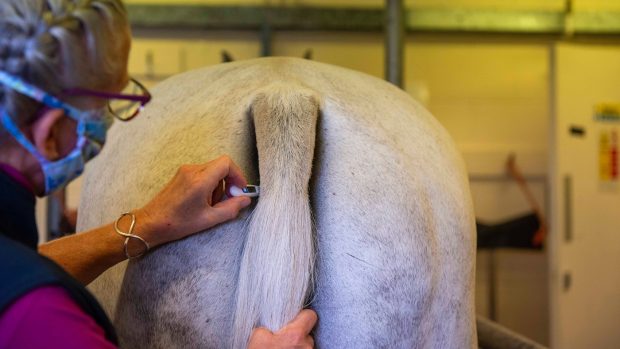Owners have been reminded to take action to minimise the risks of atypical myopathy as current conditions can make it more likely horses will contract the potentially fatal disease.
The British Equine Veterinary Association (BEVA) is advising taking practical steps to prevent horses eating sycamore seeds, which can cause atypical myopathy as they contain the toxin responsible, hypoglycin A.
Although horses do not usually choose to eat sycamore seeds, they are more likely to be ingested in barer fields. Windy weather can also spread them to fields in which there are no sycamore trees.
“The ‘toxic dose’ of sycamore seeds can vary from less than 100 to several thousand single seeds,” a BEVA spokesman said.
“With each tree potentially shedding more than 20,000 double-seeded ‘helicopters’, the amount on pastures can be considerable. In the spring, seedlings represent a risk to horses and can affect hay made from contaminated pasture. Seedlings at the edge of watercourses can also contaminate water supplies, especially when trampled as horses walk across them.”
BEVA is advising owners to identify sycamore trees, in and around grazed fields and those nearby, and collect seeds if possible, or fence off affected areas.
Feeding hay can prevent excess foraging for short grass, which can lead to accidental ingestion of seeds, although care must be taken to ensure the hay does not become contaminated with seeds.
“Don’t rashly fell trees when laden with seeds as this can cause a sudden and massive contamination of the pasture,” the spokesman said. “Consider local regulations, tree protection orders and tree ownership if felling is the only option.
“Monitor horses carefully even after they have been moved from affected pasture as disease can occur up to four days after exposure.”
The most consistent clinical sign of atypical myopathy is dark brown urine but other signs include reluctance to move and weakness.
“It’s imperative to contact your vet as a matter of urgency if you are concerned your horse may be suffering from atypical myopathy,” said BEVA president Huw Griffiths.
“We can use a special blood test, thanks to research funding from the Horse Trust, to diagnose and measure exposure to the toxin. The earlier we are able to intervene the more likely a favourable outcome for the horse.”
Atypical myopathy has a fatality rate of about 70% so should always be considered a veterinary emergency if it is suspected.
You might also be interested in:

Atypical myopathy: what you need to know right now to keep your horses safe

‘You don’t think it will be your horse’: owner’s atypical myopathy warning
‘He was very underneath himself at his back end and looked uncomfortable. At first I thought it was colic and

Subscribe to Horse & Hound magazine today – and enjoy unlimited website access all year round
Horse & Hound magazine, out every Thursday, is packed with all the latest news and reports, as well as interviews, specials, nostalgia, vet and training advice. Find how you can enjoy the magazine delivered to your door every week, plus options to upgrade your subscription to access our online service that brings you breaking news and reports as well as other benefits.




